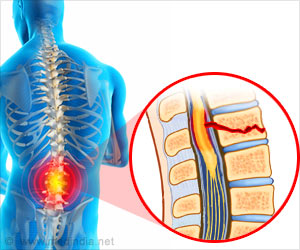Highlights:
- Treatment of spinal cord injury remains a major challenge since regenerating nerves are unable to bridge the gap caused by spinal injury
- Silk fiber from the Antheraea pernyi silkworm possesses unique properties allowing it to act as a scaffolding over which regenerating nerves can grow
- According to WHO estimates, currently about 250,00 to 500,000 people worldwide suffer spinal cord injury, with not too many effective treatment options.
What Makes DAPF Unique In Treating Spinal Injury?
Currently synthetic electro spun nano-fiber materials have been widely researched for use as scaffolding in the management of spinal injuries. They have been shown to possess good mechanical strength and degradation permitting growth of regenerating nerve fibers. However the chemicals and solvents used to produce them are highly toxic to the tissues and also the fiber size is not uniform. Thus, synthetic fibers may not be biocompatible with human nerve tissue and are unsuitable for use in spinal damage.Similarly nano-fiber produced from natural polymers degrade too quickly before nerve regeneration is complete, and again not the optimal choice in spinal cord injuries.
The modified DAPF silk had unique properties desirable in a scaffold suitable for spinal repair.
- It has the correct rigidity: being too rigid and unyielding could harm the surrounding spinal cord tissue, if it is too soft it would be unable to support nerve growth over it
- The AP silk filament has a repeating Arginylglycylaspartic acid (RGD) chemical sequence on its surface which allows these filaments to bind to receptors on nerve cells and encouraging their attachment to the scaffolding and growth
- Importantly, the AP silk did not stimulate a response by immune system cells in the spinal cord, thereby reducing inflammation and tissue damage
- Last but not the least, the AP silk degrades gradually over time. Thus, once it supports the early growth of nerves across the injury site, these nerves take over the role of the scaffold, promoting further nerve growth, while the silk scaffolding dissolves.
Dr Wenlong Huang, from the University of Aberdeen, said: ’Spinal injuries affect 250,000–500,000 people globally every year. It can have devastating effects for people who suffer them, including loss of motor and sensory function below the level of injury, and bladder, bowel, and sexual dysfunction. If we can work to find a solution, such as the use of AP silk, to improve their quality of life even slightly then it is beneficial. Intriguingly, AP silk may also have the potential to aid repair following brain injury. These are still early bench-based studies but they certainly seem to show that AP silk has fantastic properties, especially suitable for spinal repair, and we look forward to researching this further.’
In conclusion the absence of effective treatments for spinal injury means the quality of life of several thousand patients worldwide is affected. The findings of the current study certainly offer a glimmer of hope for a vast number of such patients and their families.
The initial reaction following a spinal cord injury with loss of mobility, possibly impaired bladder and bowel control is naturally shock and disbelief and a feeling of helplessness at being increasingly dependent on others. However there are a number of ways to gradually gain control of the situation, build one’s physical strength, self-esteem and mental strength
- Speak about your injury with friends and family and tell them how they can help.
- Slowly increase your independence by the use of specialized equipment and devices that are available, such as wheel chairs, electronic aids, electronic stimulations and robotic gait training
- Eat healthy and well and maintain a healthy body weight. Consult a dietician. There should be adequate padding between the skin and bones
- Take regular vitamin and mineral supplements
- Make sure you take sufficient fluids and prevent dehydration
- Avoid smoking and alcohol as they interfere with healing
- Assisted physical training to regain muscle strength and prevent muscle wasting
- Avoid spending too much time in the sun
- Occupational therapy to redevelop fine motor skills necessary for routine activities
- Undertake vocational therapy aimed at finding a friendly work place suited to your disability and skills
- Recreational therapy encourages patients to participate in sports and leisure activities suited to their level of disability
- Plan travel well in advance and carry your prescriptions with you
- Take a seat cushion when you travel.
References:
- Arginylglycylaspartic acid - (https://en.wikipedia.org/wiki/Arginylglycylaspartic_acid)
- Health Tips for Individuals Living with a Spinal Cord Injury - (http://conquerparalysisnow.org/ArticleDetails/tabid/149/ArticleID/61/Health-Tips-for-Individuals-Living-with-a-Spinal-Cord-Injury.aspx)
Source-Medindia











